Get High Returns With Codeless Integration Platform
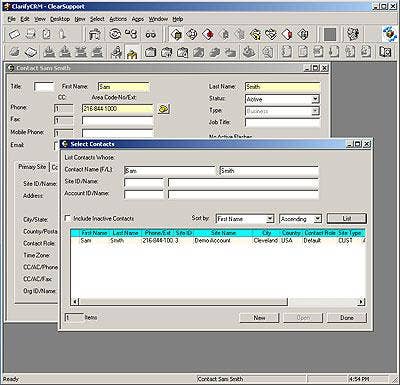
OpenSpan's new flagship Enterprise Platform minimizes VAR integration work
In this example, OpenSpan is using an enterprise client/server CRM application. The client resides on thousands of desktops around the world. By scanning the CRM application's UI, OpenSpan can create connection points into the application without coding.
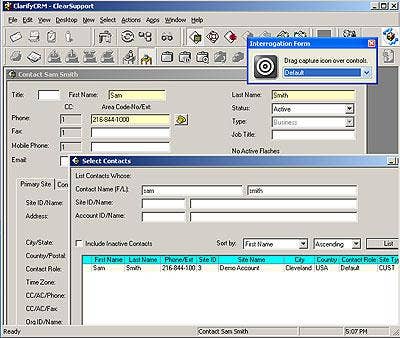
OpenSpan's interrogation process is quite intuitive. Just select and you're done.
The first step is to interrogate the legacy CRM application with OpenSpan Studio. On the upper right hand side, VARs can see the Interrogation button from OpenSpan Studio. The steps are simple -- open a project item for each application and begin the interrogation. As VARs interrogate objects within applications, each object is added to the OpenSpan Studio's Object Explorer. VARs can interrogate any object that would play a part in an automated integration process and Web service. Typically, VARs can interrogate application fields, buttons and anything else that's interactive and programmable.
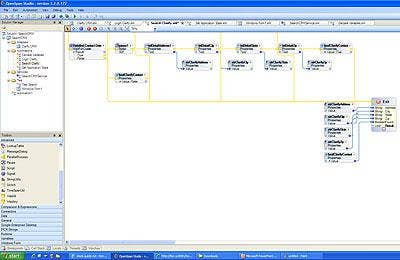
Create new applications by linking properties and adding logic statements
After interrogating a client application, VARs can begin buiding an automation process using the visual drag-and-drop capabilities of OpenSpan Studio to combine the presentation objects from the Object Explorer. VARs would connect the data and execution paths to build the desired automated workflows.
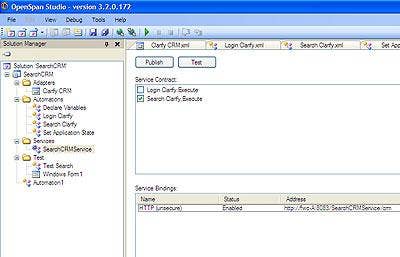
OpenSpan makes it easy
VARs would open up a new project item and select "Service" to expose that automation as a web service. VARs choose the web invocation such as REST services. The next step is to bind a port such as HTTP, HTTPS, named pipes, TCP for the service and test the connection. Once tested, publishing the WSDL takes minutes.
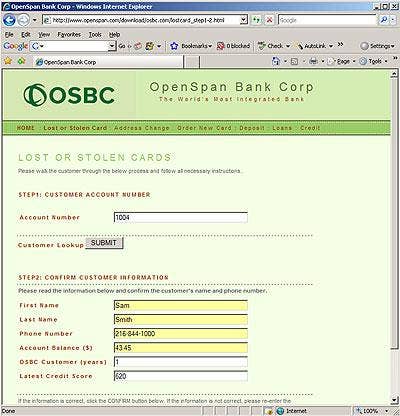
Applications created with OpenSpan run seamlessly
The new application shows a web application consuming the new service. This is the newly transformed client/server CRM application running as a web application. The new application mimics common web applications that customer service representatives or call center agents at a financial services company would use to access customer data stored in the original client/server CRM application. There's no need to access the old CRM directly anymore.
OpenSpan provides lots of flexibility in terms of how services can be consumed. New services can be consumed from a new composite application, web application or portal, called from another service, and even by existing applications.
No coding is required. The sample web application calls the newly deployed OpenSpan service, which provides the requested customer data from the CRM application to users via the new web application.
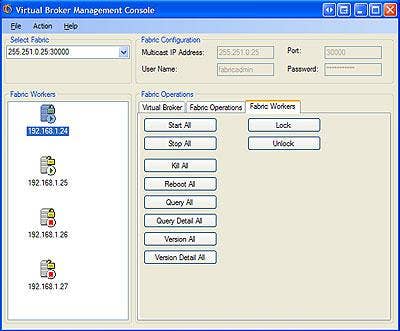
Delivering services with scalability
A new Virtual Broker helps VARs deploy OpenSpan services in a scalable and secure fashion on the server-side. The Virtual Broker is an application fabric for managing multiple sessions, including virtualized sessions. The Broker supports .NET and most J2EE-based application servers, and handles service request queuing, locking and dispatching. The Broker also includes management console for key performance and load statistics.